Schools Evacuated In Iran Due To Land Subsidence
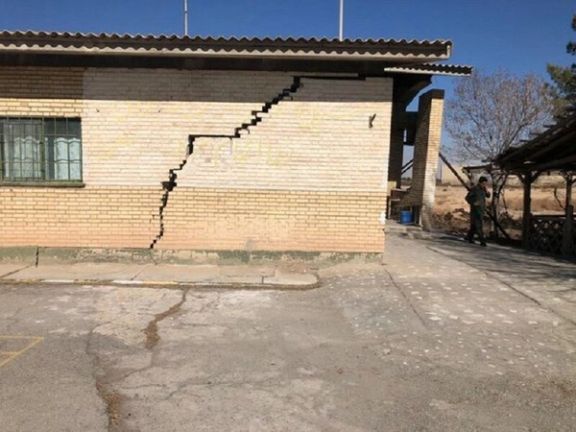
Iran’s Deputy Minister of Education has said that several schools in the central province of Esfahan (Isfahan) have been evacuated due to land subsidence.

Iran’s Deputy Minister of Education has said that several schools in the central province of Esfahan (Isfahan) have been evacuated due to land subsidence.
Hamidreza Khan-Mohammadi also raised concerns about the situation in schools located in Yazd and Tehran.
Speaking to the ILNA news agency on Sunday, Khan-Mohammadi highlighted the severity of the subsidence issue in Esfahan province, stating that "we have evacuated some schools" due to the problem. He assured that these evacuated schools would be renovated to strengthen them against the threat of land slippage.
The provinces of Tehran, Khorasan Razavi, and Esfahan are at highest risk of land subsidence, with Esfahan metropolis under particular threat. Khan-Mohammadi confirmed this emphasizing that Esfahan faced the greatest challenge of subsidence with limited cases being reported in Tehran. Yazd also experienced subsidence, which resulted in damage to schools, although the extent of damage was reported to be less significant.
Recent assessments indicate that around 4.24 million residential units in land subsidence zones lack proper structural support.
The issue of land subsidence extends beyond major urban centers to large construction projects. Across numerous regions in Iran, ground cracks and significant depressions resembling meteor craters have emerged on the surface in recent years.
According to experts, over-extraction of groundwater has played a pivotal role in the creation of underground cavities, resulting in the occurrence of land subsidence.

The US-Iran deal to release Tehran’s frozen funds has had little impact on the battered rial as traders understand that no hard cash will enter the market.
The Iranian currency has lingered just below 500,000 per dollar, a trend persisting for weeks. Consequently, the substantial inflationary pressures burdening Iran's economy are unlikely to abate soon, as long as US banking sanctions remain intact, obstructing the repatriation of hard currencies accrued from oil exports.
Shipments of crude remain high, with Iranian officials saying that the government’s target of 1.4 million barrels per day has been reached, but this does not mean Tehran is receiving full payments in dollars or euros from its main customer, China.
Meanwhile, additional media reports suggest not only a $6 billion release from South Korean banks, but also the unlocking of frozen funds in Iraq (estimated between 11-12 billion dollars) and over $3 billion from Japan. These funds will be held in Qatar and Oman, designated for Iran's purchases of essential goods such as food, medicine, and other humanitarian items.

Al Jazeera reported Sunday that up to $23 billion will be released from South Korea, Iraq and Japan although it will not bring a substantial boost to Iran’s economy. It hinted that the deal was not just a hostage release agreement, but it also aims at freezing Iran’s nuclear program at current levels. This begs the question if US sanctions will be enforced until the US presidential elections next year, or there is perhaps a secret deal to ease the pressure.
This is just part of the concerns critics of the deal in the United States have. The main objection to pay $6 billion for 5 hostages is the potential danger it creates for American citizens around the world, who can be arrested or taken hostage by an array of hostile actors, not excluding China and Russia.
The Wall Street Journal in an editorial on Sunday slammed the Biden administration for paying $1.2 billion per hostage and dismissed the claim by the administration that the funds will only be available for humanitarian needs.
“Iran will use the cash the same way it did the money it received from the Barack Obama-John Kerry 2015 nuclear deal—to spread mayhem in the Middle East and beyond,” WSJ said. The newspaper also argued that “Money is fungible, as the White House knows, and its ‘humanitarian purposes’ line is best understood as political cover to justify the money-for-hostages deal. In a competition for the funds between the Islamic Revolutionary Guard Corps and the public health of the Iranian people, who do you think wins?”
The argument that money is fungible is even more applicable to Iran, which has an opaque political system not accountable to the people. Most companies that would be involved in the ‘humanitarian’ imports with the released funds are controlled by regime insiders and the Revolutionary Guard.
The WSJ also predicted that the deal is not limited to releasing the American hostages and could be prelude to an informal agreement to ease sanctions in return for an Iranian promise not to escalate its nuclear program.
“This new informal nuclear deal sounds like a less enforceable version of the 2015 pact. Call it money and sanctions relief for promises, and don’t expect Congress to have any say in approving it,” the editorial stated.
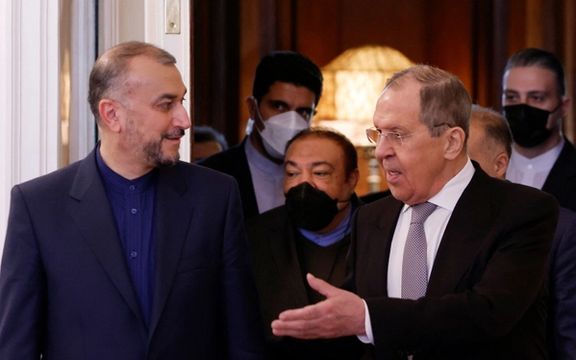
The intensification of international sanctions against Russia has made Iran a potentially major trade partner for Moscow, a website in Tehran said on Saturday.
According to Rouydad24, Iranian officials have started to think of Russia as a $100 billion market for Iranian goods. This, however, is an outlandish expectation given Iran’s own isolation due to sanctions, its crippled economy, and the need for technology and raw materials hard for Iran to acquire.
The volume of trade between Moscow and Tehran reached $4 billion between January and October 2022, a far cry from the $100 billion figure. Russian officials have said that the volume of trade will reach $7.5 billion by 2025.
However, the main area of cooperation between Moscow and Tehran is political and military. The two have been allies in the Syrian civil war and their military ties have been expanding since Russia’s invasion of Ukraine. Iran supplied hundreds of kamikaze drones to Russia that have been extensively used against Ukrainian civilian and infrastructure targets.
Western countries have imposed new sanctions on Iranian individuals and entities for aiding Russia in the war, but a recent move by the United States to release billions of dollars in frozen Iranian funds in exchange for 5 American hostages means Tehran will remain undeterred to expand military ties with Moscow.
Rouydad24 quoted Iranian exporter Ali Hosseinian as saying that the figure will be initially increased to $8 billion, but the final target for trade between Iran and Russia is $40 billion per year.
In the meantime, Russia's export to Iran has grown by 27 percent while Iran's export to Russia also grew by 10 percent in 2022. Iran and the Eurasia Economic Union consisting of Russia, Kazakhstan, Belorussia, Armenia and Kirgizstan signed an agreement in early 2023 to boost exchange of goods, services and labor. Meanwhile, Iran and Russia agreed to cooperate in the areas of technology and logistics, while also signing several other agreements for cooperation in the areas of aircraft manufacturing, oil and gas pipelines and natural gas field development.
Iran is Rusia's second biggest trade partner among the Caspian Sea littoral countries, Rouiydad24 wrote, adding that some 90 percent of Russia's export to Iran are food and agricultural products. At the same time, some 60 percent of Iran's exports to Russia also consist of agricultural products. The rest of its exports to Russia include minerals, construction material, and plastics.
Meanwhile, Iran has called for a boost in Russia's exports to Iran particularly for wheat, grains, maze and cooking oil ingredients. According to the Rouydad24 Russia is capable of providing these items. Iran imports around $10 billion of wheat, maze, various edible oils and animal feed annually and potentially Russia can provide all these as a single-source exporter.
According to Reuters, one controversial item among Iran's imports from Russia is gasoline which Russia sells to Iran at a price $12 per ton higher than market prices.
Earlier this year Russia's VTB Bank opened a branch in Tehran and Iranian experts said that the branch will facilitate Iran's safe and low-cost access to the banking systems of Europe, Africa and Asia. It is not clear how this can be done while the Western and other international sanctions are in place against both Tehran and Moscow. International access for Russia’s own banking system has been severely restricted.
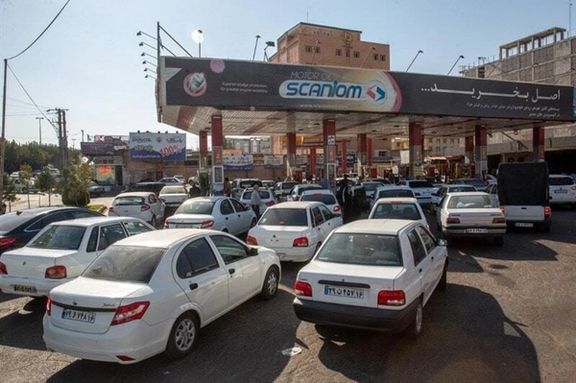
In response to a large gap between gasoline production and consumption, Iran has scaled back its distribution and turned to using its strategic reserves.
According to Iran International sources, the Iranian Oil Ministry has taken the step citing the need to curb smuggling. The other option would be to raise prices but the regime is worried that it could trigger protests across the nation.
The National Iranian Oil Refining and Distribution Company (NIORDC), a department within the ministry, has released around 900 million liters of strategic gasoline reserves into the market in an effort to make up the deficit. An informed source disclosed that the country's reserves now stand at approximately 500 million liters, barely enough for more than four days in the event of any production-related disruptions.
The source added that there are challenges for gasoline imports both domestically and internationally, leading to a consistent reduction of gasoline distribution in various regions of the country.
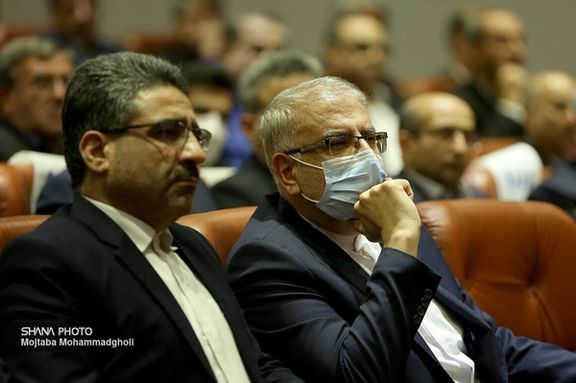
Both Oil Minister Javad Owji and NIORDC Manager Ali-Akbar Nejadali have confirmed the supply restriction. Nejadali explained that in light of increased summer travel and to ensure a steady distribution and prevent station closures, a new measure has been introduced, limiting each refueling session to only 30 to 40 liters.
Iran International reported in late July that the government has postponed tighter fuel rationing implementation due to the approaching anniversary of last year's anti-regime protests in September.
Earlier in the month, NIORDC deputy manager Ali Ziyar said that the average daily consumption of gasoline has hit 124 million liters, indicating a 20-percent increase compared with the previous year. “In recent years, the maximum annual growth in gasoline consumption has been seven percent, but this year we have suddenly experienced a 20 percent increase in consumption,” he said, tacitly acknowledging that a large amount of fuel is being smuggled out of the country. He also stated that the daily gap between production and consumption is 17 million liters.
The government, which controls one of the world's largest oil and gas reserves, sells gasoline at extremely low, subsidized prices, charging less than 10 US cents per gallon, or less than 3 cents per liter, while neighboring oil-producers have much higher prices, in line with international market rates. Second only to Venezuela, Iran has the world’s cheapest gasoline price. The extremely low fuel prices leads to small and large-scale smuggling to neighboring countries.
Back in March, Iran International unveiled a classified document detailing a late February meeting at the presidential office. This document revealed that dangerously low levels of strategic fuel reserves forced major refinery repairs to be postponed to maximize short-term production. Officials were advised to avoid any public statements or suggestions that could be construed as intentions to raise current fuel prices, fearing it might ignite public discontent.
One of the main reasons that the Islamic Republic has not managed to increase prices in the midst of the current economic crisis is because it faced the worst wave of unrest in years since September 2022. A fuel price hike would risk fanning the flames of unrest further. For years there has been talk of adjusting prices, but since 2018 Iran’s currency has dropped 12-fold and any increase needs to be huge to be meaningful in US dollars.
In November 2019, a government decision to increase fuel prices by 50–200 percent triggered a cycle of protests and unrest across the country that lasted for over two weeks. Regime forces killed at least 1,500 civilians, in the worst such crackdown in Iran.
While the country is hugely dependent on the revenues from crude oil exports, due to sanctions and mismanagement, it has failed to modernize the energy sector, with power shortages persisting most of the year. Systemic corruption also further cripples the weak system. The situation has been grave in recent years but since the administration of Ebrahim Raisi assumed office in 2021, the entire energy management system is going haywire, drawing backlash from not only the public but even regime insiders.
In recent days, rumors of an impending gasoline price increase have once again ignited, prompting a rush of people to gas stations.
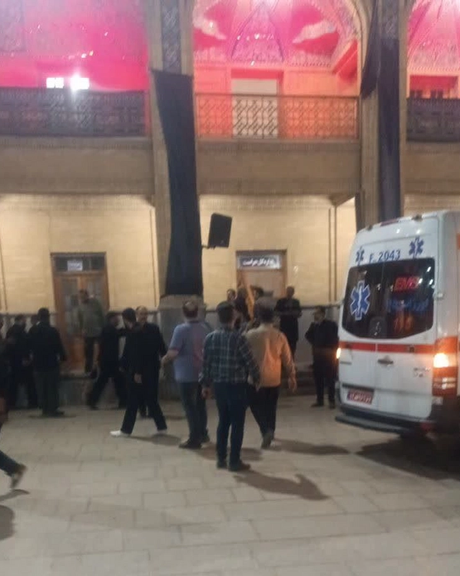
Iranian state media have reported a terrorist attack on Sunday at a religious shrine in Shiraz, southern Iran, resulting in multiple deaths and injuries.
According to government media reports, two gunmen attempted to enter the premises of Shahcheragh, which was the site of another shooting incident last year. However, they were met with resistance from security guards.
Subsequently, the gunmen unleashed a shooting spree that claimed the lives of at least two guards and two visitors, while also causing injuries to several others, IRNA reported. Different Iranian media outlets have presented conflicting figures regarding the number of casualties.
As of now, one of the shooters has been apprehended, while the other perpetrator remains at large, Fars news reported without any information about their identity.
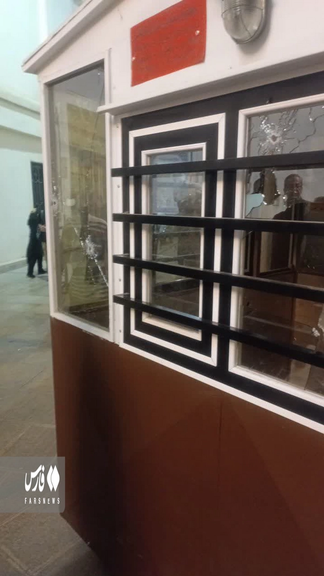
In July, Iran publicly hanged two Afghan men who were accused of involvement in an attack on Shahcheragh last October, resulting in 15 deaths and 20 injuries.
The lone gunman, armed with an assault rifle, entered the shrine and opened fire, and was subsequently shot and wounded. The government reported he died in hospital, identifying him as a Tajikistan citizen. The two men who were hanged on July 8 were alleged to have directly participated in the "arming, procurement, logistics, and guidance of the main perpetrator" of the terrorist attack.
The October attack on Shahcheragh coincided with anti-regime protests in Iran. This prompted speculation and accusations that the government orchestrated the attack as a diversion from the protests and as a pretext for further crackdown.
In a perplexing turn of events, the Islamic State group claimed responsibility for the attack, which fit the government narrative of Iran being under attack by extremists.
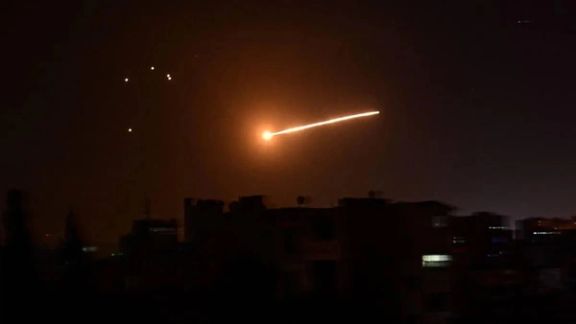
Strikes on Sunday attributed to Israel have targeted missile stockpiles of Iran-backed militias east of Syria's capital Damascus.
Residents of the region reported repeated blasts which came from "the warehouses of pro-Iran militias" in a mountainous area east of the capital, said the Britain-based Syrian Observatory for Human Rights, which has a wide network of sources inside Syria.
The head of the war monitor, Rami Abdel Rahman, said they do not know if the blasts were from an airstrike or ground operation, adding that it was still unclear if anyone was wounded or killed in the explosion.
Israel has been attacking what it has described as Iran-linked targets in Syria since 2017, to prevent Islamic Republic forces getting entrenched near its northern borders and weapons reaching the Lebanese Hezbollah.
The most recent reported Israeli strike was on August 7, when weapons and munitions warehouses and positions of Iran-backed militias around Damascus were targeted. At least four Syrian army soldiers were killed in the attack.
Iran intervened in the Syrian civil war in 2011 to save Bashar al-Assad’s regime, which had close ties with Tehran and allowed weapons and assistance to flow to Hezbollah in Lebanon. With crucial Iranian and Russian military assistance Assad has regained most of the territories lost to the rebels but remains highly dependent on Moscow and Tehran.
Iran says its officers serve in an advisory role in Syria at the invitation of Damascus. Hundreds of Iranian forces and thousands of proxy militiamen including senior officers have been killed in Syria during the war.